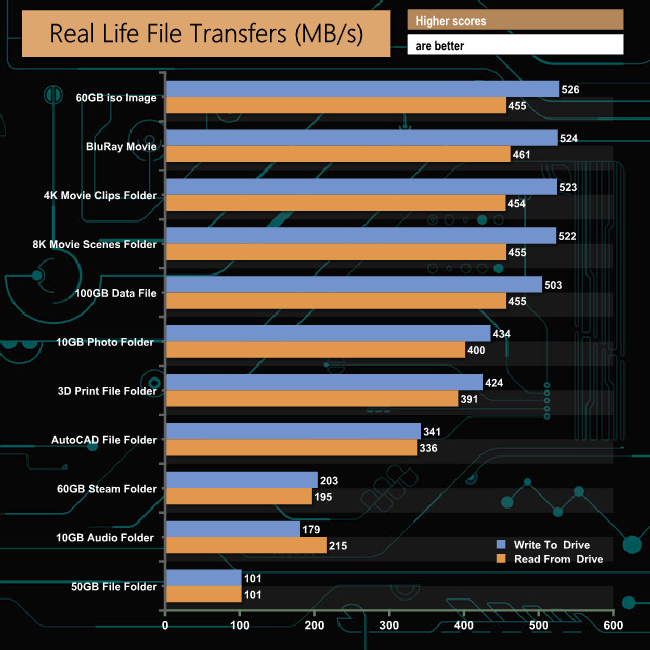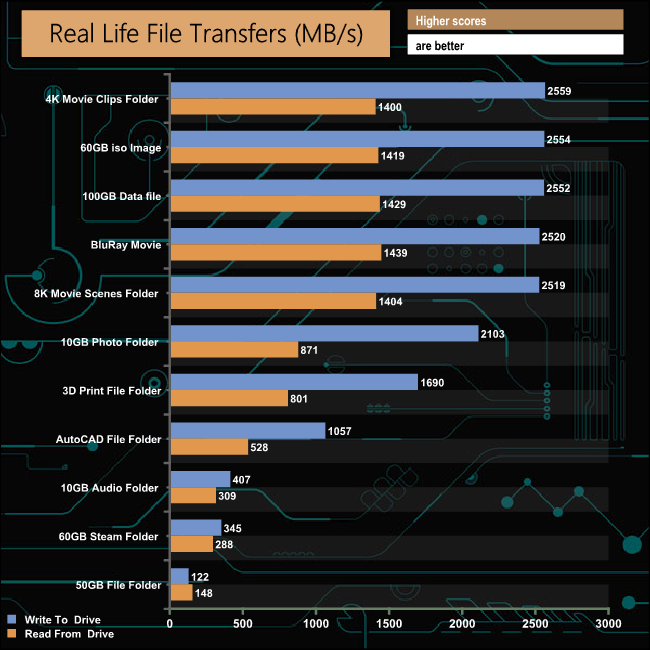To test real-life performance of a drive we use a mix of folder/file types and by using the FastCopy utility (which gives a time as well as MB/s result) we record the performance of drive reading from & writing to a 256GB Samsung SSD850 PRO.
We use the following file/folder types:
- 100GB data file.
- 60GB iso image.
- 60GB Steam folder – 29,521 files.
- 50GB File folder – 28,523 files.
- 10GB Photo folder – 621 files (mix of .png, raw and .jpeg images).
- 10GB Audio folder – 1,483 files (mix of mp3 and .flac files).
- BluRay Movie.
- 21GB 8K Movie demos.
- 11GB 4K Raw Movie Clips (8 MP4V files).
- 4.25GB 3D Printer File Folder (mostly .STL).
- 1GB AutoCAD File Folder (.dwg and .dxf).

The FireCuda 520 had no problems dealing with our real-life file transfer tests. The drive is much more efficient at handling larger file sizes than the smaller files found in the 60GB Steam, 50GB file and 10GB audio folders as can be seen by the large difference in transfer rates.
To get a measure of how much faster PCIe NVMe drives are than standard SATA SSDs we use the same files but transfer to and from a 512GB Toshiba OCZ RD400.
Taking the SATA SSD out of the picture gives an idea of just how capable a PCIe Gen4 drive is. For example, the 60GB ISO file took 1m 52s to write to the SATA drive and 2m 9s to come back the other way. The same file took 23 seconds for the FireCuda 520 to write to the NVMe drive and 41 seconds to read the data back. The 21GB 8K movie scene folder took 41 seconds to write to the SATA drive but a mere 8 seconds to write to the Toshiba OCZ RD400 NVMe drive.
 KitGuru KitGuru.net – Tech News | Hardware News | Hardware Reviews | IOS | Mobile | Gaming | Graphics Cards
KitGuru KitGuru.net – Tech News | Hardware News | Hardware Reviews | IOS | Mobile | Gaming | Graphics Cards



